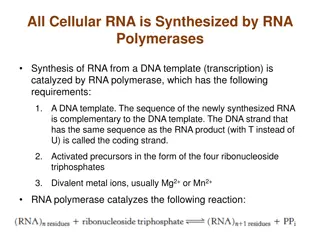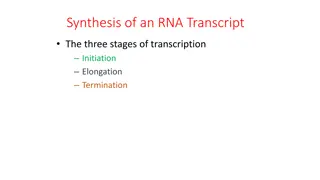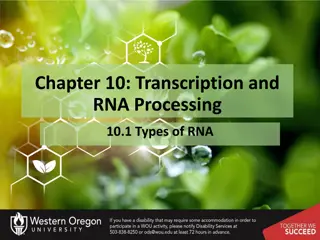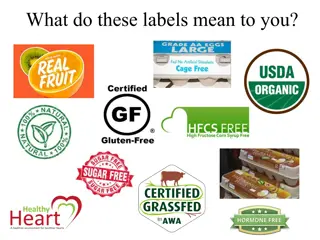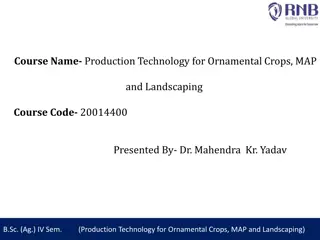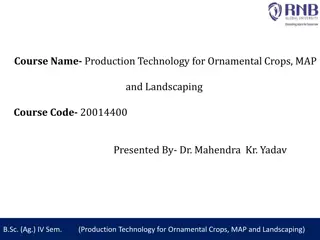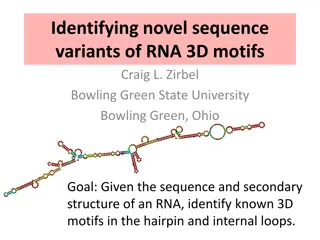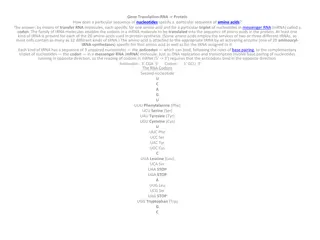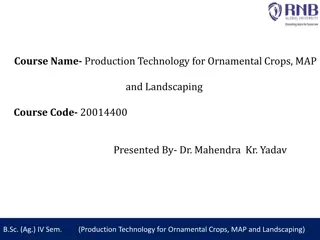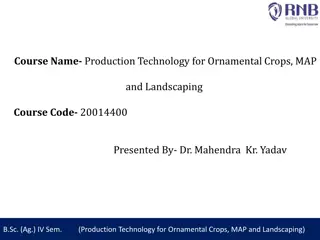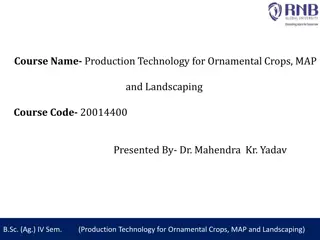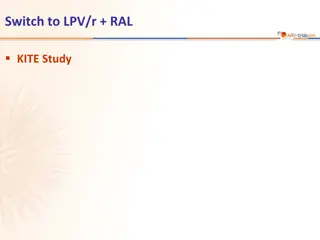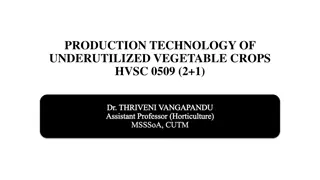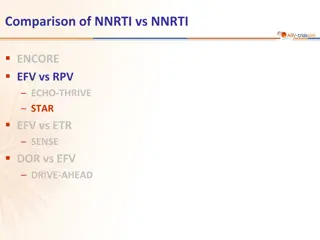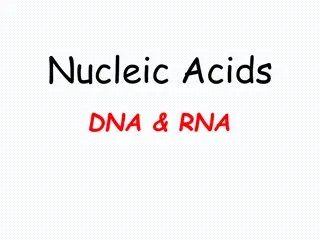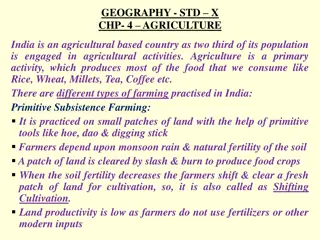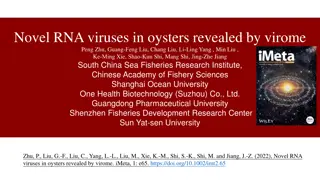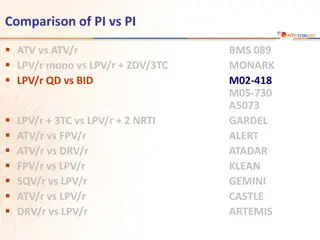Safety and Efficacy of RNA in Human Diet and Agricultural Crops
RNA is a common component of the human diet, with naturally occurring RNAi mechanisms in various organisms. While staple foods contain RNA, barriers in the human body limit systemic exposure, making oral ingestion ineffective for RNAi. Studies have shown minimal bioavailability and efficacy of dietary miRNAs, questioning their impact. Plant breeders have used RNA-based mechanisms in crops without adverse effects, highlighting the precedence for evaluating RNA in agriculture.
Download Presentation

Please find below an Image/Link to download the presentation.
The content on the website is provided AS IS for your information and personal use only. It may not be sold, licensed, or shared on other websites without obtaining consent from the author. Download presentation by click this link. If you encounter any issues during the download, it is possible that the publisher has removed the file from their server.
E N D
Presentation Transcript
CLI Human Health Comments for EPA RNAi SAP Taiwo Koyejo, Ph.D Manager, Regulatory Affairs, Plant Biotechnology CropLife International Helping Farmers Grow Helping Farmers Grow
RNA is a common component of the human diet RNAi is a naturally occurring mechanism in eukaryotes Plants, insects, fungi, nematodes, and mammals. RNA molecules that mediate RNAi are a natural part of the human diet. Humans ingest ~1-2 grams per day of total nucleic acid in diet (Suchner et al., 2000). 0.1-0.2% of total RNA in plant is small RNAs (Ivashuta et al., 2009). Corn, soy, rice, lettuce, and tomato contain long dsRNAs with sequence identity to the human transcriptome (Jensen et al., 2013). Some rice small RNAs have 100% identity to human genes ion transporters, nuclear receptors, growth factor receptors, cell cycle, and cell signaling (Ivashuta et al., 2009). Staple foods containing dsRNA are safely consumed by billions of humans around the globe daily. 3 Helping Farmers Grow Helping Farmers Grow
Barriers minimize systemic exposure to orally ingested RNA in humans Biochemical and physical barriers minimize the systemic absorption of intact nucleic acids from the GI tract. Nuclease activity in saliva and intestine, low pH in stomach Tight epithelial barriers, endosomes, lysosomes These barriers greatly limit the uptake of RNA when consumed orally, which results in negligible systemic exposure. Evidence for barrier efficacy; successful RNA-based therapeutics utilize routes of administration that bypass these barriers (Forbes and Peppas, 2012). Systemic delivery (e.g., intravenous injection). Local administration (e.g., intraocular injections). 4 Helping Farmers Grow Helping Farmers Grow
The weight of experimental evidence suggests an oral route of exposure is ineffective for initiating RNAi Studies evaluating the oral bioavailability and efficacy of miRNAs from foods have been conducted. Zhang et al., 2012; Witwer et al., 2013; Snow et al., 2013; Dickinson et al., 2013. Zhang et al. reported potential mammalian gene regulation following oral ingestion of rice siRNAs, but the reliability of this study is questionable Dickinson et al. could not replicate these findings and detected no appreciable exogenous RNA uptake. Similarly, studies by Witwer et al. and Snow et al. provide evidence that uptake of intact RNA is negligible. Furthermore, Dickinson et al., demonstrate that an unbalanced diet, rather than miRNAs, were responsible for physiological effects reported by Zhang et al. 5 Helping Farmers Grow Helping Farmers Grow
Precedent of evaluating crops with RNA-based mechanisms Plant breeders have historically selected for traits with RNA-based mechanisms. Suppression of chalcone synthase gives soybeans their off-white coat color and maize its green stalk color (Tuteja et al., 2004; Della Vedova et al., 2005). Biotech crops using RNAi are commercially available and there have been no reported adverse effects Plenish and Vistive Gold soybeans, The standard comparative assessment analyses utilized for GM crops to-date also appears appropriate for the evaluation of crops with RNA-based mechanisms. 6 Helping Farmers Grow Helping Farmers Grow
Precedent of evaluating crops with RNA-based mechanisms The existing paradigm is appropriate for RNA-based traits, however, the following studies conducted for transgenic protein PIPs would not apply to RNA-based traits. Amino acid homology to known toxins and allergens, or digestibility assays, as no heterologous proteins are produced Acute oral toxicity study, as RNA is not orally toxic and has negligible oral bioavailability All known food allergens are proteins and digestibility assays demonstrate they are not refractory to digestion; a characteristic of proteins with increased allergenic potential (Astwood et al., 1996). The FDA has indicated nucleic acids from food and feed do not indicate a safety concern (FDA, 1992). 7 Helping Farmers Grow Helping Farmers Grow
Topically applied RNA as a crop protectant Agricultural biotechnology companies are currently investigating the potential of topically applied dsRNA as crop protectants. Insect and nematode protection. Weed control. Advantages of topical RNA: Considerable history of safe consumption for RNA. Pests may be precisely targeted based on their genome; off-target effects are not anticipated. RNA is anticipated to break down rapidly (Christensen et al 2013); bioaccumulation is not anticipated. In previous regulatory decisions EPA has acknowledged the lack of risk arising from exposures to nucleic acids. 8 Helping Farmers Grow Helping Farmers Grow
Conclusion 1. RNA-based technologies are anticipated to have favorable safety profiles due to an extensive history of safe consumption and exposure. 2. The internationally accepted principles for the safety evaluation of biotech crops should also be applied to crops using RNA-based mechanisms as plant incorporated protects. 3. Topically applied dsRNA appears to offer a desirable combination of efficacy and selectivity. 4. Existing regulatory frameworks will be suitable for the evaluation of these products whether the RNA-based mechanism is produced in plants or topically applied. 9 Helping Farmers Grow Helping Farmers Grow



